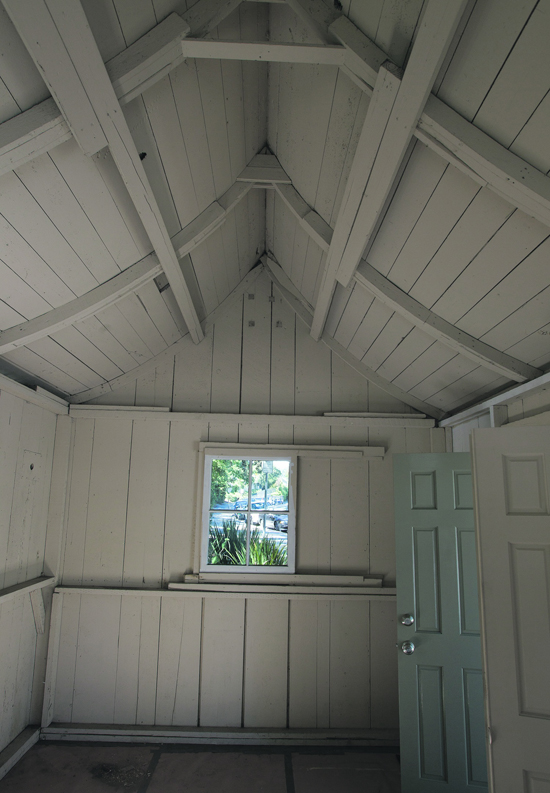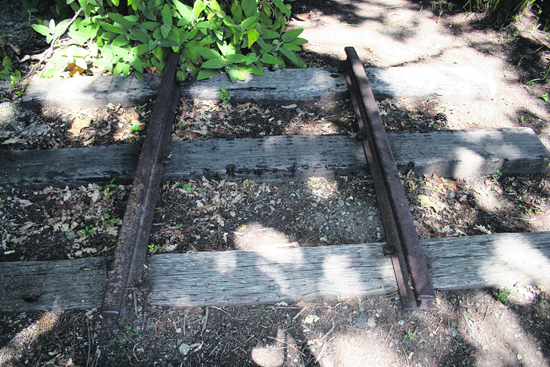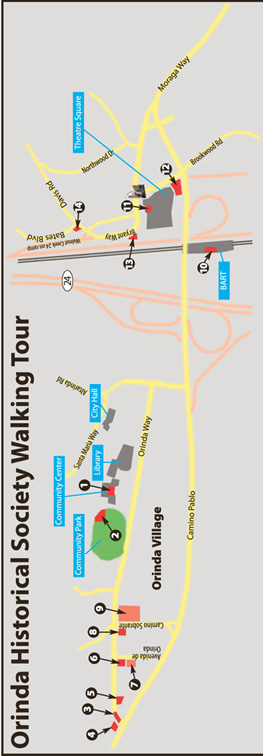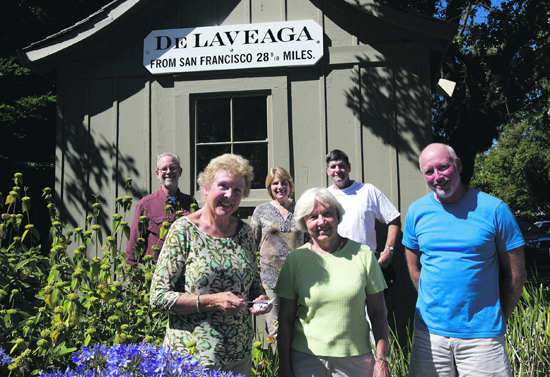
| ||||||
 |
 A segment of narrow gauge track displayed outside the depot. Photo A. Firth |
|
| Interior of the depot showing the curved roof line. Photo Doug Kohen |

Built in 1925 and served as a school until 1973 when it became the Community Center.
2 California and Nevada RR Trestle Remains, Orinda Community Park
Behind the older children’s playground on the right side of the creek look for a post with aqua-colored paint—the remains of the trestle for the narrow gauge railroad.
3 1920 San Pablo Creek Bridge, Orinda Way and Camino Pablo
The County built a bridge across San Pablo Creek in 1920.
4 Casa Verana, 128 Camino Pablo
Built in 1921, the first commercial structure in Orinda Village, known as the White Swan, had a small store, gas station, and a refreshment stand. The brown-shingled building has been expanded and houses businesses today.
5 First Firehouse, 107 Orinda Way
(Orinda Village Antiques)
Built in 1923, it looked like a garage and housed one truck. Served as the firehouse until 1942.
6 First Store (Phair’s), 10 Avenida de Orinda
Built in 1924 by E. I. de Laveaga to provide goods and services. Ewart Phair became the owner in 1941 and the building was renamed.
7 Second Firehouse
Behind the Phair’s Building
Built in 1942, this firehouse was torn down due to flooding from San Pablo Creek. Look for the remains of the old wooden flagpole.
8 Miss Graham’s Riding Academy, 63 Orinda Way
The Riding Academy was located next door to Orinda Motors (toward Camino Sobrante where the garage now sits).
9 Safeway Parking Lot, 2 Camino Sobrante
During Orinda’s early days, the parking lot site was used for rodeos.
10 BART History Mural
Left of the BART entrance on theexterior wall
Created to celebrate the bicentennial, the mural of Orinda’s historic sites was designed by local artist Loni Bee.
11 Orinda Theater, 2 Theater Square
The Art Deco style theater built in 1941 is the city’s most prominent landmark.
12 Pony Express Marker
Minipark, northwest corner of Camino Pablo and Brookwood Road
The Pony Express came through Orinda at least 11 times. Follow the path behind the fountain to find the plaque on a rock.
13 Bryant Station Marker
At the end of Bryant Way next to the freeway
This was the end of the line for the California & Nevade RR, a narrow gauge railway from Emeryville. Look for the big rock across the street from the landscaped circle outside of Theater Square.
14 de Laveaga Train Station, Bates Boulevard and Davis Road
Originally located near Miner Road, the station was one of three stops on the California & Nevada RR in Orinda. The train depot was moved to this location in 2000.
Source: City of Orinda Historic Landmarks Committee
Copyright  Lamorinda Weekly, Moraga CA
Lamorinda Weekly, Moraga CA
